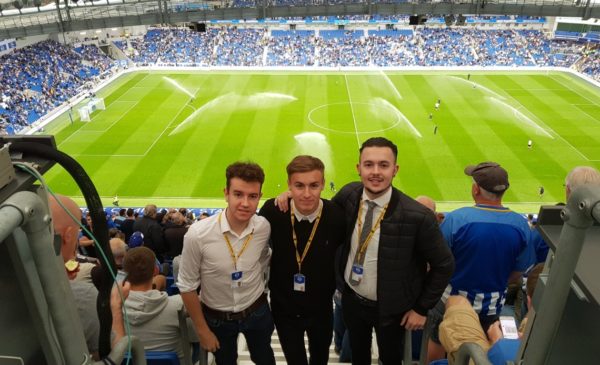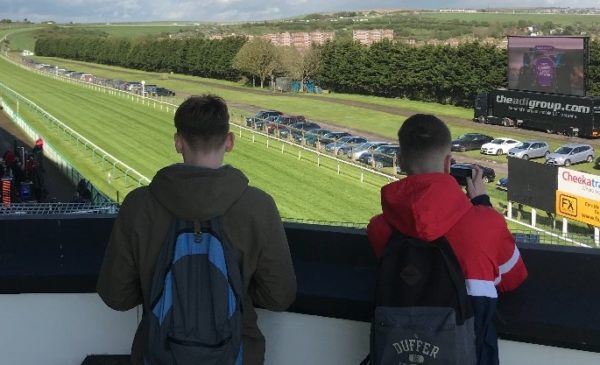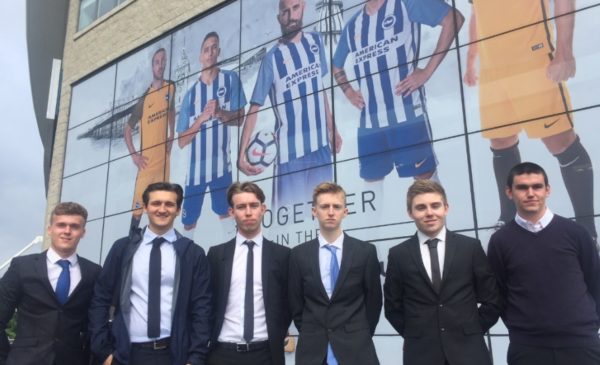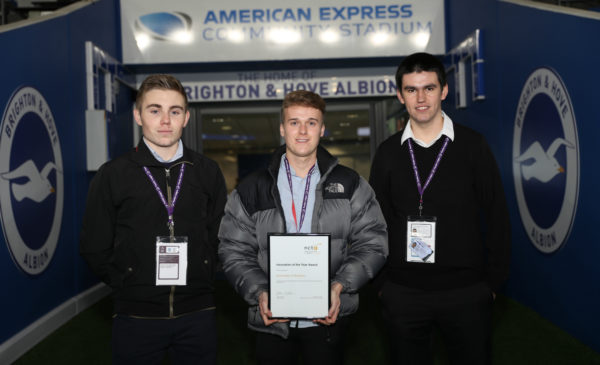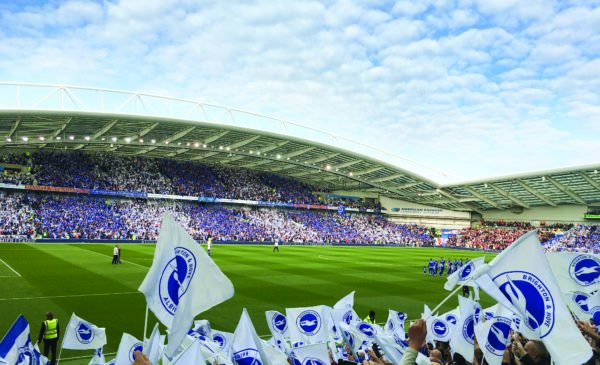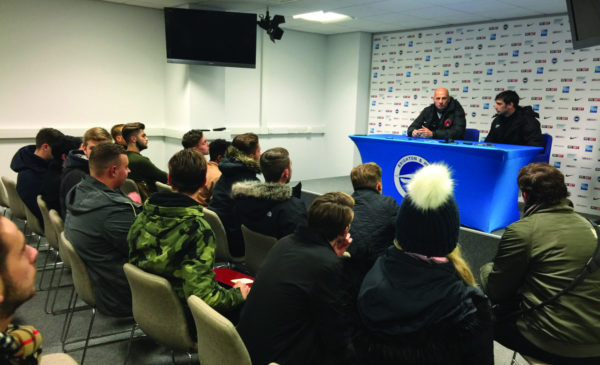Ice hockey continues to be the only professional sport in which fighting is encouraged, but are the potential risks to player safety ignored due to the fear of pushing fans and revenue away?
As the New York Rangers led the Washington Capitals halfway through the second period on May 4, 2021, Tom Wilson punched a defenceless Pavel Buchnevich and then turned his attention to Artemi Panarin. Wilson threw Panarin down to the ice after ripping off his opponents’ helmet and repeatedly punched him as Panarin attempted to get up.
This wasn’t a fight; it was a senseless act of violence and Panarin could’ve been seriously injured or even killed if his unprotected head had collided with the ice.
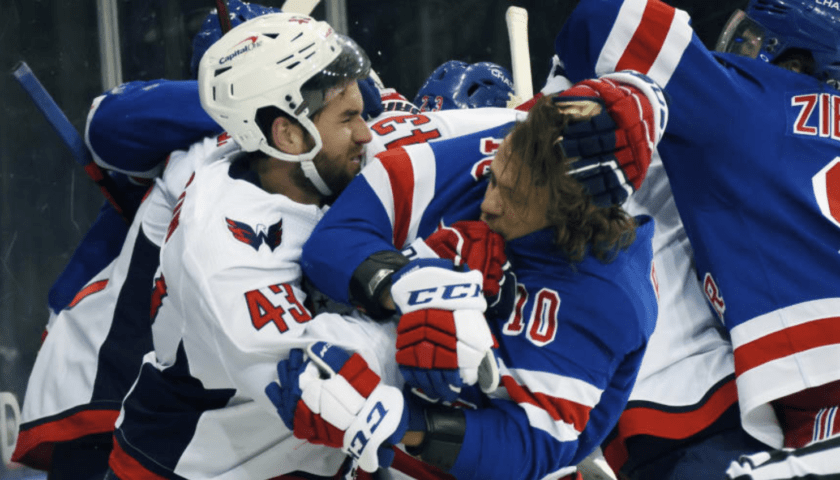
Wilson was given a double-minor penalty for roughing as well as a ten-minute misconduct for his actions, with Panarin leaving the game injured. Not only did Wilson return to the ice that night, he scored the final goal of the game as the Capitals came from behind to win.
The day after the game, Wilson escaped suspension and was fined $5,000[1], which is the maximum fine allowable under the NHL’s Collective Bargaining Agreement. Shockingly, the NHL specified that this fine was only for Wilson’s actions against Buchnevich and no action was taken for his assault on Panarin.
The $5,000 fine set Wilson back just 0.12% of his $4.1 million salary[2], and the news that no suspension was awarded to Wilson caused uproar, with fans and fellow players targeting the NHL across social media.
The New York Rangers posted a statement following the leagues decision, challenging the NHL and their department of player safety:
Two days after the incident the Capitals and the Rangers played again, and as predicted the ice rink became a battlefield. Wilson started on the ice and the game became ugly right from the off.
Within one second of the puck drop there were three simultaneous fights, and the fight tallies reached six before five minutes of the first period had been played.
There were multiple violent scenes, which could’ve all been avoided if Wilson was correctly suspended, but the NHL remained stubborn on their ruling and this worryingly highlighted their lack of concern for player safety.
To make matters worse for the Rangers, they were fined $250,000 by the NHL for their comments made towards the league following the conclusion of the second game. [4]
NHL commissioner Gary Bettman stated: “Public comments issued by the Rangers that were personal in nature and demeaning of a league executive will not be tolerated. The extent to which the Rangers expressed their disagreement was unacceptable. It is terribly unfair to question George Parros’ professionalism and dedication to his role and the Department of Player Safety”. [5]
The spotlight is heavily focused on the NHL as their attitude towards player safety has been scrutinised more than ever. The NHL fined Wilson just $5,000 for assaulting two players, one of which was lucky to escape serious injury, but heavily penalised the Rangers for speaking out about their sense of injustice.
The magnitude of the violent act conducted by Wilson completely contradicts the slap on the wrist punishment that the NHL continues to impose and until this is addressed, it’s only a matter of time until something extremely serious happens.
This has put the NHL in a really bad position, and they know it. They’ve got away with it again this time, but if Panarin’s head had struck the ice it would’ve resulted in a serious concussion at the very least.
So many further issues can result from concussions later on in life and it’s perhaps grimly fitting that Panarin’s lucky escape has occurred as we approach the tenth anniversary of Derek Boogaard’s death.
THE CASE OF DEREK BOOGAARD
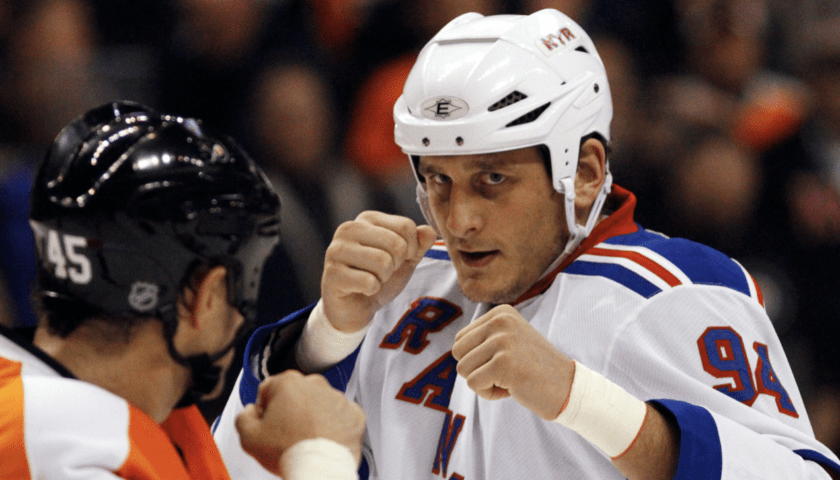
Derek Boogaard was drafted by the Minnesota Wild before moving to the New York Rangers and was a seemingly happy and healthy 28-year-old, living the Canadian dream.
Early into his sixth and ultimately final year in the NHL, this dream became a nightmare as he was placed on the injury list for the remainder of the season.
Boogaard was experiencing major headaches from the repeated concussions he received due to actively fighting in the NHL and he became addicted to strong Oxycodone medication to cope with the pain. [6]
Boogaard died shortly before his 29th birthday from an accidental drug and alcohol overdose[7] due to the excessive amount of Oxycodone he was taking, along with heavy drinking one night when out with friends.
After his death, Boogaard’s brother revealed that “he’d go through 30 pills in a couple of days” and that “he’d need eight to ten at a time just to feel okay”[8]. This is in extreme excess of the instructed use which recommends ‘tablets should be taken in 12-hour intervals’. [9]
Boogaard’s family donated his brain to the Sports Legacy Institute at Boston University Medical School[10] and two months later, doctor Ann McKee revealed that Boogaard had suffered significant damage to his brain tissue. McKee also stated that Boogaard had suffered from an extremely advanced stage of chronic traumatic encephalopathy (CTE), which can only be diagnosed after death. [11]
CTE is a neurodegenerative disease linked with repeated blows to the head, but the damage doesn’t usually show until years after the initial injuries. Complications like cognitive impairment, emotional instability, substance misuse and depression can arise in people that have succumbed to CTE throughout their life. [12]
It is well documented with athletes that have been involved in combat and contact sports, as CTE has a complex relationship to head traumas, especially post-concussion syndrome and second impact syndrome.
Along with symptoms that typically occur eight to ten years after impact, the condition often progresses to dementia and declining mental ability later in life. [13]
Many retired ice hockey players are now experiencing the neurological damage caused from their playing days so why is Boogaard’s case unique?
Boogaard was still young but his CTE was more advanced than many middle-aged former players that have also experienced damage while playing the tough enforcer role. A prime example being Bob Probert, former Chicago Blackhawk and Detroit Red Wing enforcer.
Probert died at the age of 45 from a heart attack in July 2010[14], and his family also donated his brain to the same institute at Boston University. During their study of Probert’s brain, they found heavy evidence of CTE and predicted that he would’ve experienced middle-aged dementia if he had lived. [15]
While recovering from his concussions, Boogaard shut himself off in his apartment and joked about lapses in his memory. He battled depression and put on significant weight.
He grew lonely, racking up a huge phone bill throughout February 2011 as he sent 13,724 separate text messages. [16]
Boogaard became increasingly addicted to the medication that contributed to his death, driving weekly to buy thousands of dollars’ worth of Oxycodone from a dealer. [17]
Depression, memory loss and mood changes are all common symptoms of CTE and Boogaard was experiencing this despite only playing six seasons in the NHL. Probert had a career that lasted 17 years.
Two more NHL enforcers died within the four months that followed Boogaard’s death. 27-year-old Rick Rypien committed suicide and 35-year-old Wade Belak was found dead in a Toronto hotel, with police also treating it as suicide. [18]
Boogaard, Belak and Rypien all suffered from depression, depended on various forms of medication and were all regular fighters.
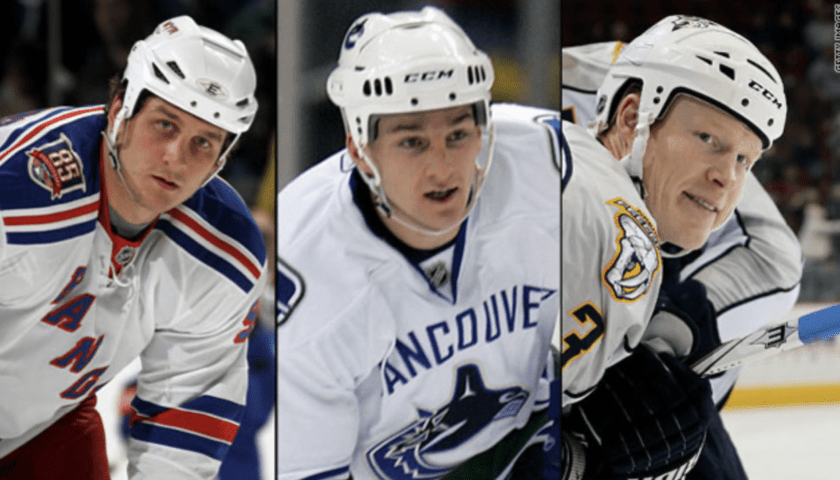
Commissioner Bettman has always disagreed that the health issues suffered by Boogaard and many other players are a direct result of playing ice hockey, and after the quickfire deaths of Rypien and Belak that followed Boogaard’s passing, Bettman said:
“There isn’t a lot of data, and the experts who we talked to, who consult with us, think that it’s way too premature to be drawing conclusions at this point”. [19]
HOW DID WE GET TO THIS POINT?
There is a clear divide within the ice hockey community about the violent nature of the sport, with a constant debate between tradition, culture and history combatting the calls for changes to be made due to safety.
Although fighting is technically not allowed, players in the NHL and most other North American leagues are handed penalties for fighting rather than facing instant ejection as you would in other leagues and sports.
In 1922, ‘fisticuffs’ was implemented into the official NHL rulebook under rule 56 and it wasn’t until 1992 that instigating a fight became a game misconduct.
Today, the section of the NHL rulebook dedicated to fighting is rule 46 and it states that referees are “given very wide latitude in the penalties with which they may impose under this rule”. [20]
This essentially means ‘it is against the rules to fight but if you do it then you’re going to have to spend some minutes in the penalty box for it’.
Bettman became NHL commissioner in 1993, a year after the first fighting rule change for 70 years was made and he has always been intent on keeping fighting part of the league.
During a Prime Time Sports Management conference in Toronto in 2013[21], he called fighting a “thermostat” for the game and said that the fights actually helped prevent other injuries that could occur on the ice.
Bettman’s feelings are backed up by bestselling author Ross Bernstein, who wrote ‘The Code: Unwritten Rules of Fighting and Retaliation in the NHL’, as Bernstein believes that fighting is a way for the sport to “police itself” and that it gives players a reminder that “if you do something bad, then you’ll pay a consequence”. [22]
Bernstein heavily believes that fighting is an integral part of playing ice hockey in the NHL and that it is one of its most honoured traditions.
Another high-profile advocate for fighting within the NHL is legendary coach and former player Don Cherry.
Cherry is a strong supporter for tougher ice hockey and has been publicly critical and controversial about less physical players, also slating modern approaches to the game.
As well as targeting league legends such as Sidney Crosby[23] and Alexander Ovechkin[24], he made xenophobic comments in 2004 towards the “European and French (French Canadian) players” for wearing the visor extension to the helmet[25], which became mandatory nine years later.
To add to his list of controversial statements, following the deaths of Belak, Rypien and Boogaard, Cherry claimed that NHL protesters were “taking advantage” of their deaths and using the recent events to make their “point on fighting”. [26]
One of the high-profile protesters following the Boogaard case was ex-NHL enforcer Jim Thomson. In response to this, Cherry targeted the former players who were protesting as he claimed, “they were a bunch of pukes that fought before”[27] and made the point that ‘only’ eight NHL players had taken their lives since 1999 (until these points were made in 2011).
No life is worth losing, but these comments represent the general feelings of many professionals and fans that find fighting to have a positive influence on the NHL. There is a sense of fear that the removal of fighting from the game could lead to a decrease in fans and therefore revenue.
Having attended many North American hockey games, there’s no denying the atmosphere change when the gloves are dropped, and the fists are thrown. Sometimes the loudest cheers of the night are ironically when no hockey is being played at all, while everyone watches on as two guys put their egos on the line.
The fact that the ice hockey stops when fights are instigated, is one factor that divides opinion as to whether it has any purpose in the game. Does it really have any relevance within the sport if it actually stops the game being played?
The counter argument remains that not only is the fighting not relevant to the game, tradition should be put to one side to prioritise player safety.
The general feeling of many health experts, professionals and fans that oppose fighting, is that unnecessary violence has become routine and tolerated by the NHL and the media, even becoming valued and glorified.
THE CONCERNING LINK BETWEEN CTE AND SPORT
The main concern for player safety is down to the increased research into CTE.
Although originally studied on boxers during the 1920s, research on CTE is a relatively new breakthrough within the sporting world as it wasn’t until after 2002 that Mike Webster became the first American Football player to be diagnosed with the disease. [28]
Although the NHL may have a long history of fighting, the new data and neurological concerns highlight the dangers that weren’t known 20 years ago, with plenty more still to uncover.
Boston University revealed to Global News CA that 99% of National Football League (NFL) players’ brains they have tested have shown signs of CTE[29], in a league where fighting isn’t permitted.
Major concern was raised by these figures and even addressed by the NFL following a review.
The NFL saw a spike in concussions during 2017, and the league implemented a rule change immediately for the 2018 season that prevented the use of the helmet to initiate contact.[30]
However, the NHL still continue to deny the links between CTE and ice hockey despite Jeff Miller, the NFL’s top health officer accepting American football’s connection to the disease. [31]
George Parros was promoted to NHL Head of Player Safety in 2017, a year after initially joining the department and upon being promoted Parros said: “what uniquely positions me for the job is that I played the game as physically as anybody and I never once was fined or suspended”. [32]
Parros’ primary role as a player was an enforcer and his passion for the physical game must be shared by the hierarchy at the NHL, as he was promoted to head of department after just 12 months.
The level of violence in the NHL peaked during the 1980s, reaching its highest point during the 1983-84 season as the NHL averaged 1.17 fights per game[33]. Lots of players from that era will now be reaching and surpassing the age of 60, a common age that signs and symptoms of CTE start to show if they haven’t already.
This generation of hockey players were not fully aware of the health concerns and potential problems that could arise later on in life.
Since the turn of the millennium the amount of fights per game has decreased by a staggering amount from the peak of 1.17 recorded during that 1983-84 season.
It was only in 1979 that wearing helmets became mandatory for incoming players[34] and shortly after the peak year in 83/84, the old timers had retired and fights began to decrease.
Both parties for and against fighting have partially been pleased over recent history as although fighting has remained, the frequency of fights in the NHL has continued to decline season by season.
This is partly due to minor rule changes and also the influx of European athletes which has diluted the North American dominance.
| Season | Games | Fights* | Fights Per Game | Games With Fights | % of Games With Fights | Games With More Than One Fight | # of players who fought** |
| 2018-19+ | 1271 | 238 | 0.19 | 213 | 16.74% | 22 | – |
| 2018-19 | 460 | 86 | 0.19 | 77 | 16.74% | 8 | 140 |
| 2017-18 | 1271 | 280 | 0.22 | 227 | 17.86% | 41 | 265 |
| 2016-17 | 1230 | 372 | 0.30 | 306 | 24.88% | 55 | 285 |
| 2015-16 | 1230 | 344 | 0.28 | 288 | 23.41% | 50 | 269 |
| 2014-15 | 1230 | 391 | 0.32 | 331 | 26.91% | 45 | 276 |
| 2013-14 | 1230 | 469 | 0.38 | 366 | 29.76% | 78 | 288 |
| 2012-13 | 720 | 347 | 0.48 | 264 | 36.67% | 66 | 245 |
| 2011-12 | 1230 | 546 | 0.44 | 423 | 34.39% | 98 | 321 |
| 2010-11 | 1230 | 645 | 0.52 | 458 | 37.24% | 117 | 348 |
| 2009-10 | 1230 | 714 | 0.58 | 493 | 40.08% | 171 | 341 |
| 2008-09 | 1230 | 734 | 0.60 | 509 | 41.38% | 173 | 355 |
| 2007-08 | 1230 | 664 | 0.54 | 473 | 38.46% | 143 | 324 |
| 2006-07 | 1230 | 497 | 0.40 | 384 | 31.22% | 87 | 292 |
| 2005-06 | 1230 | 466 | 0.38 | 357 | 29.02% | 80 | 276 |
| 2003-04 | 1230 | 789 | 0.64 | 506 | 41.14% | 172 | 340 |
| 2002-03 | 1230 | 668 | 0.54 | 464 | 37.72% | 139 | 321 |
| 2001-02 | 1230 | 803 | 0.65 | 519 | 42.20% | 172 | 348 |
| 2000-01 | 1230 | 684 | 0.56 | 469 | 38.13% | 155 | 329 |
Over the last 20 years in the NHL, rule changes to enforce minor penalties to a greater degree have sped up the game and traditional fourth line enforcers have been placed out of their depth.
A steady decline in fights began after the 2008-09 season and has continued every year as teams have adjusted to the greater demand for higher skilled players across all of their offensive lines. This is mainly due to the European influx.
Fighting is not allowed in leagues outside of North America, so with these players arriving with no fighting background, the fight numbers dropped.
The most recent statistics posted for the 2018-19 season saw an average of just 0.19 fights per game which is the first time the NHL average has ever dropped below 0.20.
In the 18-19 season just 16.74% of games had a fight, compared to the 41.4% average ten seasons prior throughout the 2008-09 campaign.
A PLAYERS PERSPECTIVE
I wanted to get more of an insight into the most physical period the NHL has seen, so I contacted Jack Valiquette, who was drafted by the Toronto Maple Leafs in 1974.
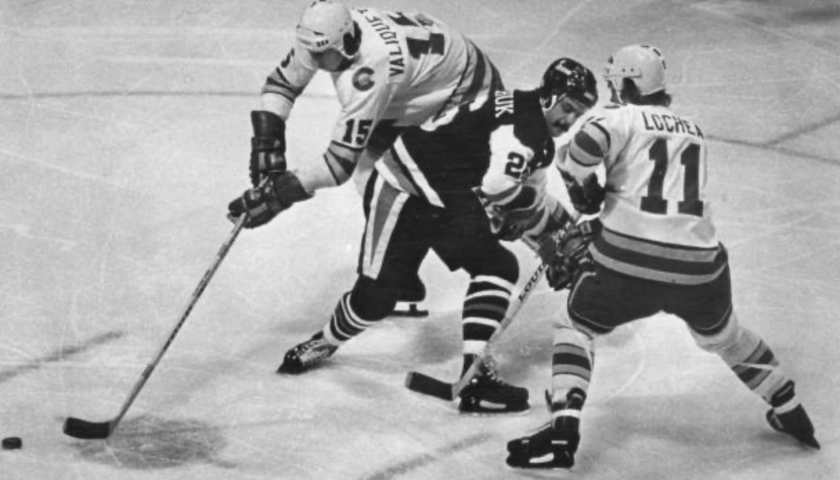
I spoke to him about his views on fighting within the NHL and asked about what he thinks about the future.
“I played in the 70s, fighting was huge then. When I came into the NHL, Philadelphia had just won the Stanley Cup and they were known as the ‘broad street bullies’. They won through intimidation and fighting but this wasn’t just fighting, this was brawling and it was uncontrollable.
“Everyone gets involved in fights, it’s practically impossible not to get into one at some point unless you’re not invested in the game. You’re going to get emotional and someone always wants to retaliate.
“In all major American leagues like the MLS, NBA and the NFL, trauma to the head is a huge concern and they are monitoring that more than ever. You aren’t allowed to fight in those leagues, yet the difference between those leagues and the NHL is insane. It gets ignored in the NHL and accepted as part of the game.
“They’ve (NHL) taken the time to slow the violence down, and they’ve reduced the amount of fights as you can see with the figures. I think the next step for them should be if you get a fighting major, you’re thrown out of that game”. [36]
I asked Valiquette if he thought the NHL would be better off without the fighting and he explained: “I still think that once in a while fighting is fine. It’s good to blow a little steam off but when guys are on the ice just to fight and that’s their purpose, we don’t need that.
“There were guys when I played that were there just for that reason and they were taking the role of a more talented player”.
Valiquette also questioned the integrity of fighting by saying: “When it’s the play-offs and games become more important, the fights dry up because no one wants to be in the penalty box, so it shows that when it comes down to it, it’s not important.
“International hockey can be some of the best hockey in the world whether it be the World Cup or the Olympics, there’s no fighting and its great ice hockey.
“You see Canada and the U.S. battling it out and these are all guys that play in the NHL, but they don’t fight because they can’t. It shows fighting can be eliminated”.
North America remains the only continent in which certain leagues encourage fighting, rather than ejecting players from the game.
All international competitions run by the International Ice Hockey Federation (IIIF) and major leagues throughout Europe do not condone fighting. Players that fight are instantly ejected and suspended.
It poses the question as to whether this is integral to the game of ice hockey itself or is it purely a unique selling point for the NHL, which remains the most popular hockey league in the world.
Valiquette commented on this, saying: “The owners of the NHL and individual teams only care about the dollar and you can’t blame them. But the safety of the players is more important. You see the lawsuits, players that have passed, it’s amazing how many of the players have passed with CTE from the concussions that they received while playing.
Valiquette is one of the many hockey professionals that played during the peak fighting era in the NHL, and the issues with CTE and long-lasting concussions is something that now unfortunately hits close to home.
“My buddies may not have played for 30 years but the damage is still showing. So many of my team members from Toronto and Colorado have passed before reaching 70 and the majority of those were fighters. They never release a specific cause of death they just label it as ‘declining health’ but we know it’s more specific than that.
Dan Maloney was a close friend of Valiquette and the two played together in Toronto. Maloney died in November 2018[37] and was one of many former NHL players that died because of ‘declining health’, but Valiquette saw the issues that Maloney was dealing with.
“Dan Maloney was one of my close buddies for 40 years after he joined Toronto. I saw especially during the last 10 years of his life that he was struggling with a lot.
“I was trying to get him help and I drove him down on many occasions to see a specialist. They wanted to do a study on him but when we arrived, he just refused and said he didn’t want any tests.
“Dan was dealing with what so many ex-pros are dealing with and it’s always from the concussions. He wasn’t healthy but seeing it so close up and clear really opened my eyes.
“Dan’s way of dealing with it was drinking, I know many others turn to drugs or booze too but those struggling do whatever they can to distract themselves from the issues. I know Derek Boogaard was the same, Joe Murphy also.”
Joe Murphy was the number one NHL draft pick in 1986, and has since found himself homeless, battling alcohol and drug addiction. [38]
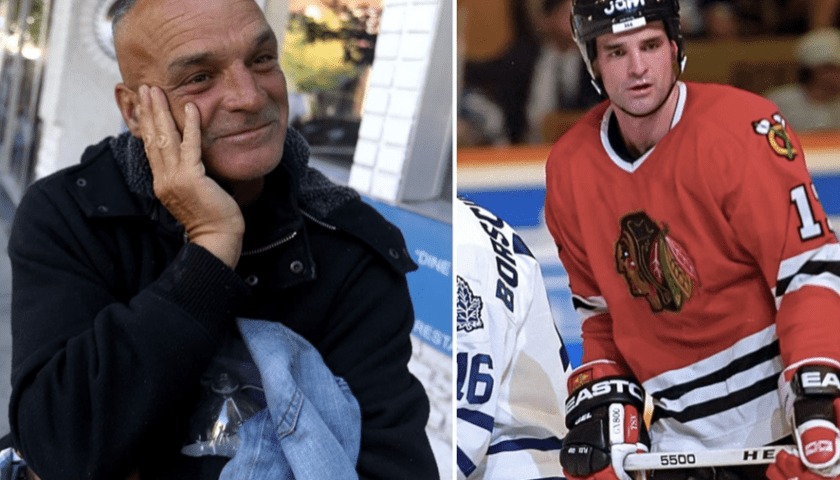
Valiquette also tried to help Murphy but insists that “he’s on a different wavelength from all the fights”.
“Joe Murphy is not well. He has shut himself off and doesn’t want any help. This is a man who made 16 million dollars playing through the 90s, but his life is completely impacted now.”
“I’ve tried to sort him an apartment and everything but he has a different way of life now, he’s not interested.”
Valiquette questions the NHL and commissioner Gary Bettman’s intentions as he says: “They have always been so negligent, Bettman works with the owners so it’ll remain that way. I was involved in a lawsuit and we all had to sign saying we wouldn’t come back for more. They wanted it settled quickly to minimise attention.
“There is a huge inherent danger and the league has never taken any responsibility. What they have done is change the game slowly over the last 10 years or so in their own way so there isn’t as much of that going on.”
The lawsuit that Valiquette was involved in signing was settled in November 2018, as the NHL announced a $18.9 million settlement with 318 former players who succeeded in accusing the league of downplaying the long-term dangers of repeated brain trauma. [39]
The settlement included lawyers’ fees and costs, free neuropsychological tests for players and up to $75,000 for medical treatments. Cash pay-outs of $20,000 per player were also issued.
Following the settlement, the NHL have filed their own lawsuit on July 31, 2020 against eight insurance companies after the league alleges that it paid for insurance coverage dating back to 1974. [40]
The NHL are seeking “tens of millions of dollars, plus a 9 percent interest for breach of policies” as they claim it is not their responsibility to pay these costs.
No verdict has been reached so far by the New York State Supreme Court, but it does highlight Valiquette’s concerns about the NHL not taking responsibility.
I attempted to contact the NHL multiple times during 2021 to inquire about these issues but received no response.
To get an insight into how the NHL is in 2021, I spoke to Isaak Phillips who was drafted to the Chicago Blackhawks during the 2020 NHL draft.
I asked Phillips what he thought about fighting and how he feels entering the league at the age of 19.
“Fighting definitely holds guys accountable on the ice. You cheap shot someone but you’ll have to fight the toughest guy in the team, so it stops a lot of players doing that or doing it less anyway.
“I’m not a fighter or a tough guy though, I’ve only fought once so far during my career. The fights aren’t like they used to be though, they last 10-15 seconds before it gets broken up.
“The NHL is definitely different to when I played at junior level, these guys are men and they’re ready to go at all times.” [41]
I asked Phillips if he thought fighting could ever be removed. He said: “I can’t see them (NHL) ever doing that. If they proposed that you’d get kicked out of the game I still think guys would do it. Some people just like to fight so I’m not sure how it would go down.
“I’m not a fighter but plenty of guys look for any excuse.
“It is definitely happening less though as you can get five minutes for fighting and it’s discouraging because no one wants to miss out on the game.”
I asked Phillips if he and his teammates were aware of CTE and the health issues some of the ex-pros are experiencing and he said: “Yeah we have heard about it, but they’ve also said its not conclusive. We just get taught to stand up for ourselves and they prepare you for the adult leagues when you play junior.
“Because of how the game is you have to be physical, or you’ll just get thrown around. I just focus on my game and let the others fight.”
Of course, players have an idea now what they are getting themselves into, but is that an excuse for the NHL to ignore the health concerns and remove accountability for that reason?
Phillips certainly isn’t a protester against fighting, but also isn’t interested in being involved. He’s young with an exciting career ahead of him, but is there a risk that players’ opinions may change when it’s too late?
Valiquette admits his eyes have been opened to the trauma, but there is nothing his teammates can do about the damage now. Should the NHL step in to stop future professionals from being in this position, or will they remain quiet and make revenue from glorifying the fights while they can get away with it?
IS IT CONCLUSIVE THE FANS WANT THE FIGHTS?
The main economic assumption as to why fighting remains a big part of the league is due to fan preference, therefore protecting sales and interest. Commissioner Bettman says “all of our research tells us that between 65% and 75% of our fans think that physicality in the game is right”. [42]
However, despite the assumptions, official NHL attendance statistics show that more fans are attending NHL games now than ever before.
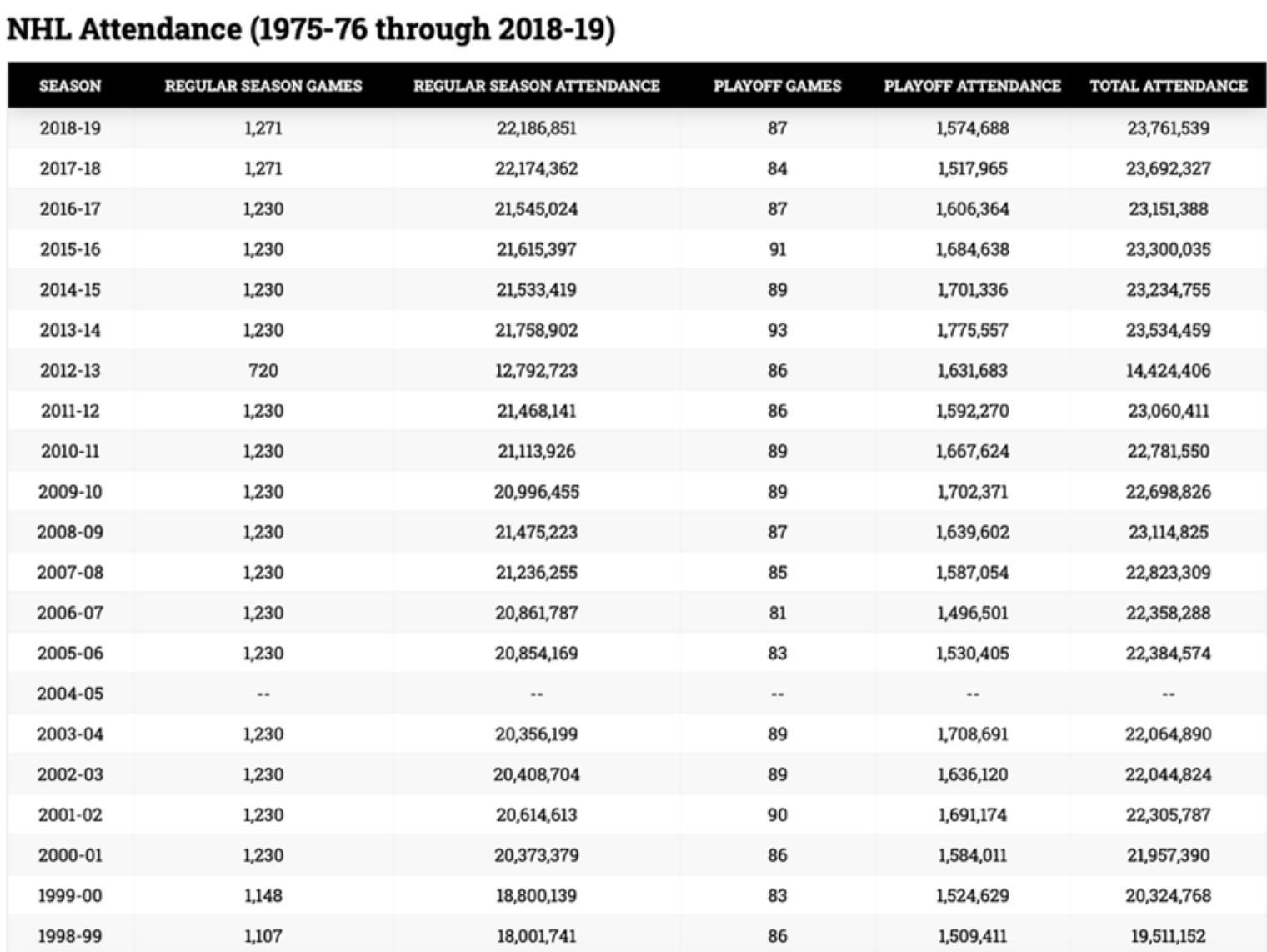
The most recent season had the highest attendance the NHL has seen for 20 years but was also the first time that fights per game had averaged fewer than 0.2. Therefore, the fans can’t just be paying to watch fights.
Does this show that fighting isn’t that important, and the hockey sells itself?
What actually is it that fans want? There seems to be a prejudice that fighting is integral to the NHL’s revenue but the disconnect between the powers at the top and the consumer ensure that these conversations aren’t shared.
I decided to create the conversation and conducted a survey that included 100 respondents across Europe and North America. I asked fans about their views on fighting within the NHL.
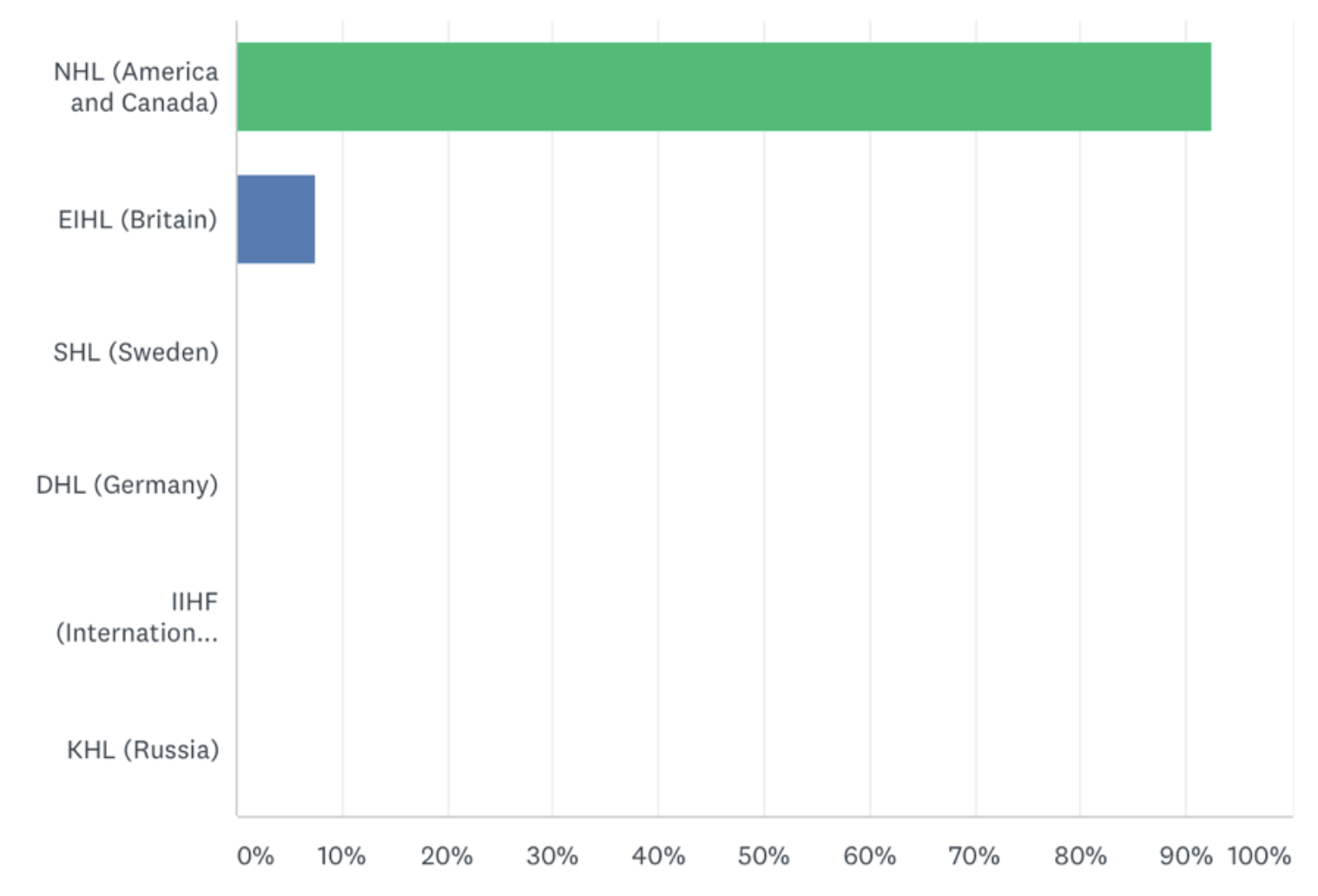
92.5% confirmed that the NHL was the league that they actively watch.
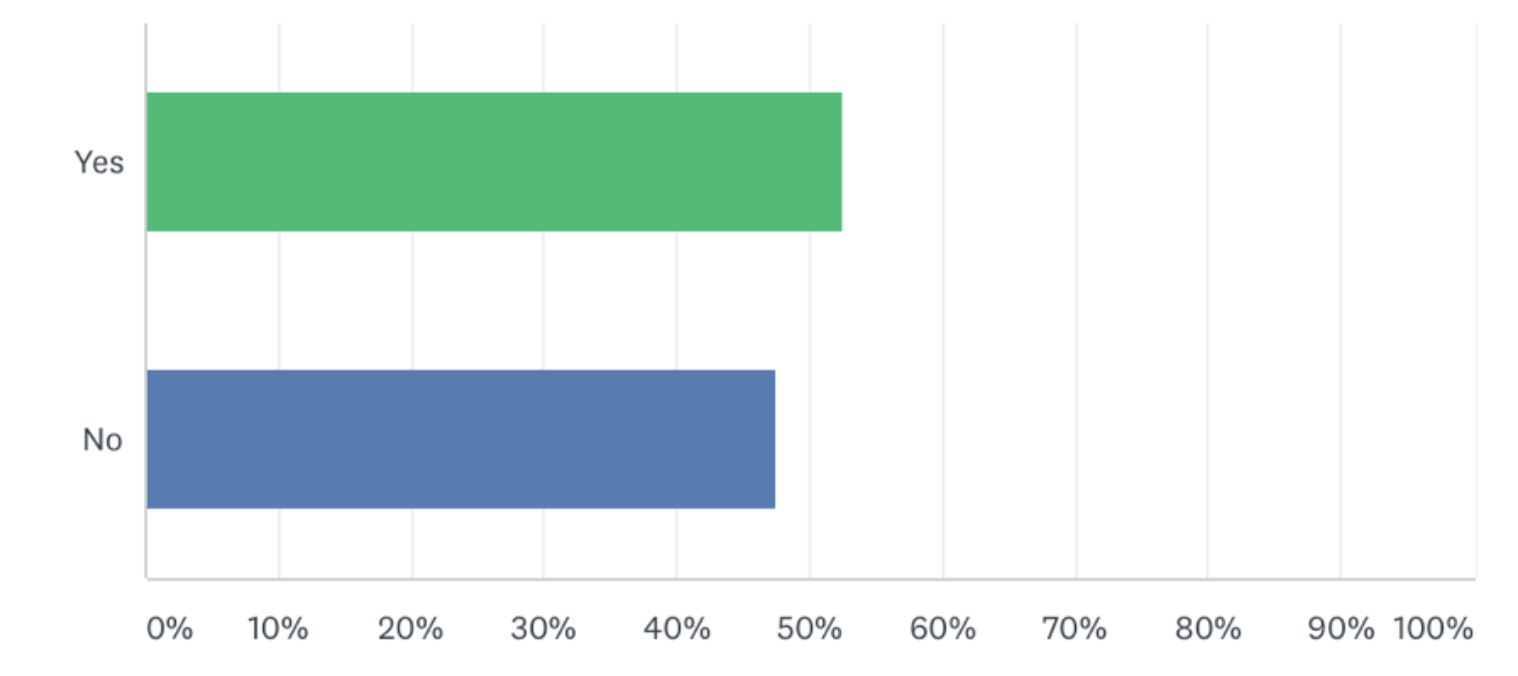
There was a divide when I asked if the respondents associated fighting with ice hockey, highlighting it isn’t an obvious answer as some may think.
I then asked how they would feel if the NHL removed fighting from the game and this was also extremely balanced. 30% of respondents chose ‘they can’t? It’s part of the game’, although the most popular answer was ‘I wouldn’t mind if it went’ with 37.5%.
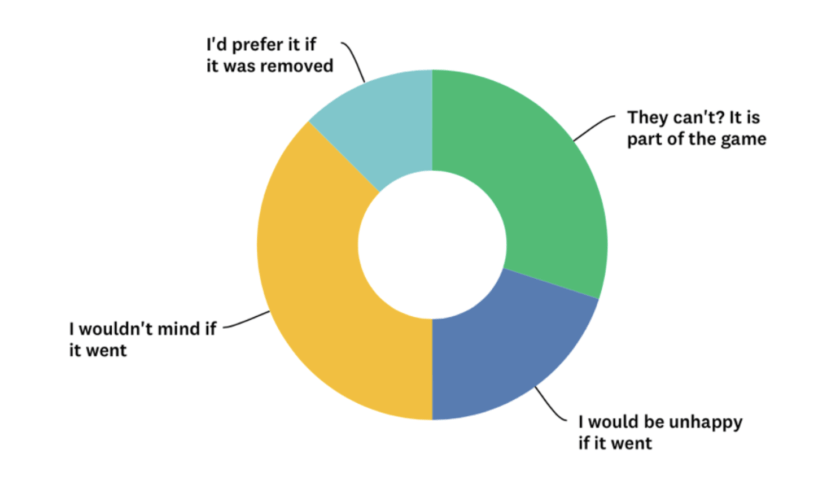
It was a perfect 50% split between the two answers that leant towards fighting being removed as opposed to the two answers expressing a will for it to stay.
This question was the most significant. I asked, ‘would you be less likely to watch if fighting was completely removed?’, and 67.5% of respondents stated that they wouldn’t, because they only watch it for the hockey.
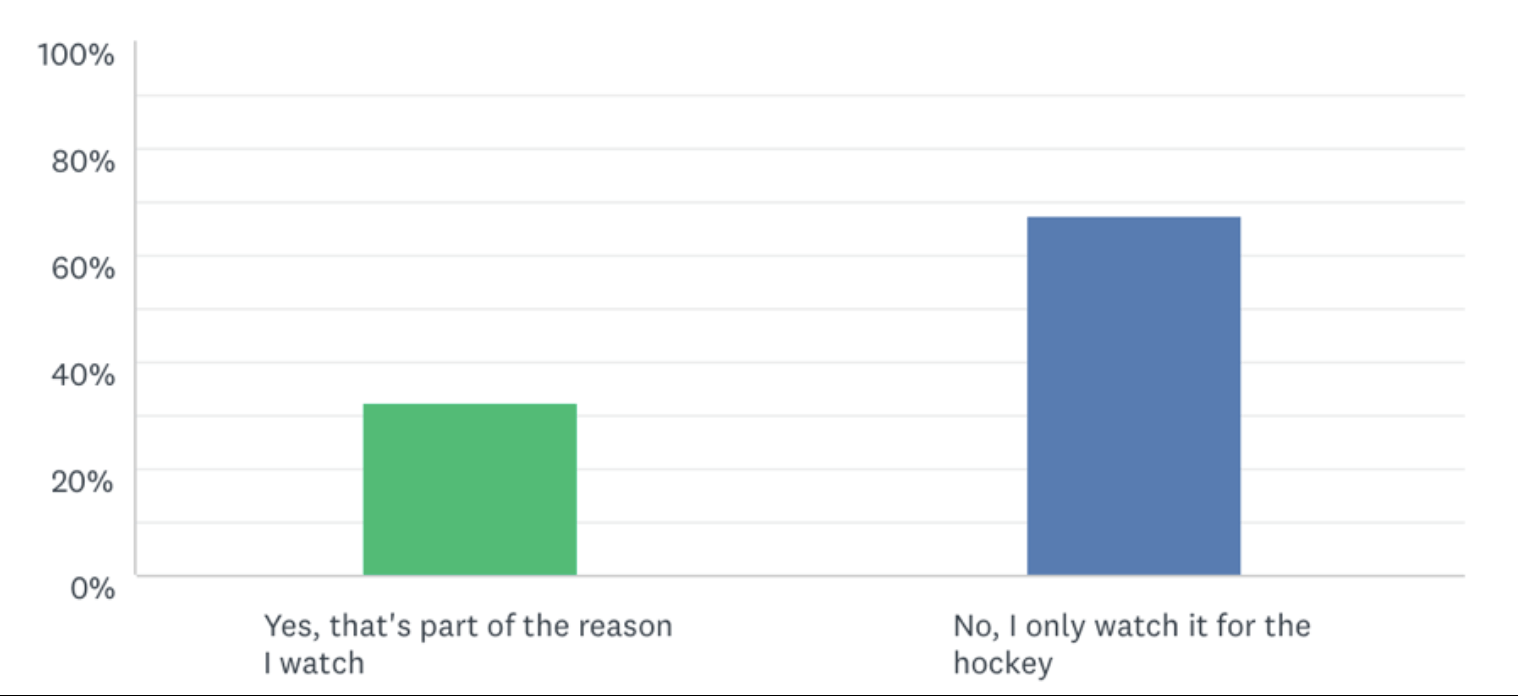
I allowed explanations to follow this question and some of the comments I received were:
“I would not be upset if fighting was removed. I’ve read many stories about former players and the health issues they continue to deal with.”
“It’s called ice hockey not ice fighting.”
“The point of the game is to score goals, not fight.”
The thing is, until a change is implemented no one really knows how it would be received. The fear of the unknown may be one of the factors that is stopping the NHL from implementing change because of the money invested. Their share price is secure if things remain the same, but the future wellbeing of the players remains in jeopardy.
No one can predict exactly what would happen, but maybe it’s time for the NHL to protect the athletes playing in their league and take responsibility.
It is impossible to please everyone with change, and people will always disagree, but one thing that unites all NHL fans is their love of ice hockey and that should always be the matter of utmost importance.
It’s impossible to remove all physicality from the league but monitoring the fisticuffs will ensure that fewer players get addicted to medication at the age of 28 like Derek Boogaard.
It will ensure that fewer players who experience trauma from concussions turn to alcohol and find themselves homeless like Joe Murphy, a former number one draft pick.
It is a matter of time until the NHL have no choice but to accept accountability and concede the obvious link between ice hockey and CTE and they should consider doing it now, before their image is damaged when it is forced upon them.
It’s also a matter of time until another incident occurs like the assault on Buchnevich and Panarin by Wilson, with no guarantee that the next victim will be as lucky as Panarin was, escaping serious injury.
Change has been successful in the NFL, why not the NHL?
Staggered rule changes have altered the game, but what is their end goal?
Is it to slightly reduce the number of damaging cases for current and future generations or do they actually intend on restricting it as much as possible?
If the league is worried about fighting fans boycotting the league they shouldn’t, as they would be instantly replaced by more admiring ice hockey fans. Fans that really love the game and the NHL would earn a newfound respect due to their positive intentions.
Their dollars will be safe, but so will the wellbeing and future health of NHL stars, which is priceless.
[1] Reyes, L., 2021. [online] Usatoday.com. Available at: <https://eu.usatoday.com/story/sports/nhl/capitals/2021/05/04/capitals-tom-wilson-fined-5000-instigating-brawl-rangers/4937500001/> [Accessed 5 May 2021].
[2] Johnston, M., 2021. Capitals sign Tom Wilson to huge six-year contract – Sportsnet.ca. [online] Sportsnet.ca. Available at: <https://www.sportsnet.ca/hockey/nhl/capitals-sign-tom-wilson-huge-six-year-contract/> [Accessed 5 May 2021].
[3] New York Rangers 2021. [online] Twitter. Available at: <https://twitter.com/NYRangers/status/1389704210288152576> [Accessed 6 May 2021].
[4] Wyshynski, G., 2021. NHL fines Rangers $250K for ripping Wilson fine. [online] ESPN.com. Available at: <https://www.espn.com/nhl/story/_/id/31399561/nhl-fines-new-york-rangers-250k-ripping-tom-wilson-fine> [Accessed 6 May 2021].
[5] NHL PR, 2021. NHL.com Media Site. [online] Media.nhl.com. Available at: <https://media.nhl.com/public/news/14894> [Accessed 9 May 2021].
[6] Branch, J., 2011. Derek Boogaard: A Brain ‘Going Bad’ (Published 2011). [online] Nytimes.com. Available at: <https://www.nytimes.com/2011/12/06/sports/hockey/derek-boogaard-a-brain-going-bad.html?_r=1&hp> [Accessed 2 March 2021].
[7] Associated Press, 2011. ME rules death of Rangers’ Boogaard accidental. [online] ESPN.com. Available at: <https://www.espn.com/new-york/nhl/news/story?id=6570143> [Accessed 2 March 2021].
[8] Branch, J., 2011. Derek Boogaard: Blood on the Ice (Published 2011). [online] Nytimes.com. Available at: <https://www.nytimes.com/2011/12/05/sports/hockey/derek-boogaard-blood-on-the-ice.html> [Accessed 2 March 2021].
[9] NHS, 2019. Oxycodone: strong painkiller to treat severe pain. [online] nhs.uk. Available at: <https://www.nhs.uk/medicines/oxycodone/> [Accessed 4 March 2021].
[10] Russo, M., 2011. Boogaard’s family will donate brain for concussion research. [online] Star Tribune. Available at: <https://www.startribune.com/boogaard-s-family-will-donate-brain-for-concussion-research/121840164/> [Accessed 2 March 2011].
[11] Associated Press, 2011. Boogaard had brain ailment caused by blows to head: report | CBC Sports. [online] CBC. Available at: <https://www.cbc.ca/sports/hockey/nhl/boogaard-had-brain-ailment-caused-by-blows-to-head-report-1.976515> [Accessed 4 March 2021].
[12] Concussion Legacy Foundation, 2021. What is CTE? | Concussion Legacy Foundation. [online] Concussionfoundation.org. Available at: <https://concussionfoundation.org/CTE-resources/what-is-CTE> [Accessed 4 March 2021].
[13] Concussion Legacy Foundation, 2021. What is CTE? | Concussion Legacy Foundation. [online] Concussionfoundation.org. Available at: <https://concussionfoundation.org/CTE-resources/what-is-CTE> [Accessed 4 March 2021].
[14] Rosen, D., 2010. Feared tough guy Bob Probert dies at 45. [online] NHL.com. Available at: <https://www.nhl.com/news/feared-tough-guy-bob-probert-dies-at-45/c-533819> [Accessed 4 March 2021].
[15] Associated Press, 2011. Boogaard had brain ailment caused by blows to head: report | CBC Sports. [online] CBC. Available at: <https://www.cbc.ca/sports/hockey/nhl/boogaard-had-brain-ailment-caused-by-blows-to-head-report-1.976515> [Accessed 4 March 2021].
[16] Branch, J., 2011. Derek Boogaard: A Brain ‘Going Bad’ (Published 2011). [online] Nytimes.com. Available at: <https://www.nytimes.com/2011/12/06/sports/hockey/derek-boogaard-a-brain-going-bad.html?_r=1&hp> [Accessed 2 March 2021].
[17] Branch, J., 2011. Derek Boogaard: A Brain ‘Going Bad’ (Published 2011). [online] Nytimes.com. Available at: <https://www.nytimes.com/2011/12/06/sports/hockey/derek-boogaard-a-brain-going-bad.html?_r=1&hp> [Accessed 2 March 2021].
[18] Cohen, T., 2011. Three hockey enforcers die young in four months, raising questions. [online] CNN.com. Available at: <http://edition.cnn.com/2011/SPORT/09/01/nhl.enforcers.deaths/index.html?hpt=hp_c1> [Accessed 6 March 2021].
[19] Robbins, C., 2011. Rangers Forward’s Brain Showed Severe Signs Of Trauma Before Death. [online] Gothamist. Available at: <https://gothamist.com/news/rangers-forwards-brain-showed-severe-signs-of-trauma-before-death> [Accessed 6 March 2021].
[20] Official Rules, 2021. Hockeycentral | NHL | NHL Rule 46. [online] Hockeycentral.co.uk. Available at: <http://www.hockeycentral.co.uk/nhlrules/Rules-46.php> [Accessed 4 April 2021].
[21] Whyno, S., 2013. Bettman: fighting in hockey is a ‘thermostat’ that helps cool things down. [online] CTVNews. Available at: <https://www.ctvnews.ca/sports/bettman-fighting-in-hockey-is-a-thermostat-that-helps-cool-things-down-1.1537635> [Accessed 4 March 2021].
[22] Bernstein, R., 2006. The Code: Unwritten Rules of Fighting and Retaliation in the NHL. 3rd ed. Chicago, Ill.: Triumph.
[23] Toronto Star, 2012. Don Cherry tells superstar Sidney Crosby to ‘stop whining’. [online] thestar.com. Available at: <https://www.thestar.com/sports/hockey/2012/04/08/don_cherry_tells_superstar_sidney_crosby_to_stop_whining.html> [Accessed 6 April 2021].
[24] NHL, 2009. Alex Ovechkin laughs off Don Cherry’s on-air criticism of celebrations. [online] NHL.com. Available at: <https://www.nhl.com/news/alex-ovechkin-laughs-off-don-cherrys-on-air-criticism-of-celebrations/c-411709> [Accessed 6 April 2021].
[25] CBC, 2004. Cherry half-right on visors: surveys | CBC Sports. [online] CBC. Available at: <https://www.cbc.ca/sports/hockey/cherry-half-right-on-visors-surveys-1.468616> [Accessed 6 April 2021].
[26] SportsNet, 2011. Don Cherry blasts ex-fighters as ‘pukes’ – Sportsnet.ca. [online] Sportsnet.ca. Available at: <https://www.sportsnet.ca/hockey/nhl/cherry-rant/> [Accessed 6 April 2021].
[27] SportsNet, 2011. Don Cherry blasts ex-fighters as ‘pukes’ – Sportsnet.ca. [online] Sportsnet.ca. Available at: <https://www.sportsnet.ca/hockey/nhl/cherry-rant/> [Accessed 6 April 2021].
[28] Roth, M., 2013. Late Steelers great Webster’s case launched the CTE brain debate. [online] Pittsburgh Post-Gazette. Available at: <https://www.post-gazette.com/news/health/2013/05/14/Late-Steelers-great-Webster-s-case-launched-the-CTE-brain-debate/stories/201305140186> [Accessed 8 April 2021].
[29] Moran, B., 2017. BU Researchers Find CTE in 99% of Former NFL Players Studied. [online] Boston University. Available at: <http://www.bu.edu/articles/2017/cte-former-nfl-players/> [Accessed 8 April 2021].
[30] Seifert, K., 2018. Guide to NFL’s new rules: What to know about approved, tabled and rejected proposals. [online] ESPN.com. Available at: <https://www.espn.com/blog/nflnation/post/_/id/272769/guide-to-nfls-new-rules-what-to-know-about-approved-tabled-and-rejected-proposals> [Accessed 8 April 2021].
[31] Fainaru, S., 2016. Top NFL official acknowledges football-CTE link. [online] ESPN.com. Available at: <https://www.espn.co.uk/espn/otl/story/_/id/14972296/top-nfl-official-acknowledges-link-football-related-head-trauma-cte-first> [Accessed 8 April 2021].
[32] SI, 2017. George Parros tapped to run NHL Player Safety. [online] Sports Illustrated. Available at: <https://www.si.com/nhl/2017/09/07/ap-hkn-player-safety-parros> [Accessed 8 April 2021].
[33] Kahane, L. and Shmanske, S., 2012. The Oxford handbook of sports economics. Oxford: Oxford University Press, pp.159-176, 251-261.
[34] NY Times, 1979. N.H.L. Rules New Players Now Must Wear Helmets (Published 1979). [online] Nytimes.com. Available at: <https://www.nytimes.com/1979/08/07/archives/nhl-rules-new-players-now-must-wear-helmets.html> [Accessed 4 March 2021].
[35] Hockey Fights. 2020. Hockey Fight Statistics. [online] Available at: <https://www.hockeyfights.com/stats> [Accessed 12 March 2021].
[36] Valiquette, J. 2021. Interviewed: Thursday March 25th over Zoom. Email: jvalique@rogers.com
[37] Canadian Press, 2018. Former Maple Leafs player, coach Dan Maloney dies at age 68 – Sportsnet.ca. [online] Sportsnet.ca. Available at: <https://www.sportsnet.ca/hockey/nhl/former-maple-leafs-player-coach-dan-maloney-dies-age-68/> [Accessed 26 March 2021].
[38] Dixon, R., 2019. Inside Joe Murphy’s fall from the Stanley Cup to the streets of Kenora. [online] Sportsnet.ca. Available at: <https://www.sportsnet.ca/hockey/nhl/joe-murphy-homeless-kenora-stanley-cup/> [Accessed 26 March 2021].
[39] Westhead, R., 2020. Westhead: NHL in legal battle with insurers refusing to pay concussion lawsuit costs – TSN.ca. [online] TSN. Available at: <https://www.tsn.ca/westhead-nhl-in-legal-battle-with-insurers-refusing-to-pay-concussion-lawsuit-costs-1.1555455> [Accessed 26 March 2021].
[40] Westhead, R., 2020. Westhead: NHL in legal battle with insurers refusing to pay concussion lawsuit costs – TSN.ca. [online] TSN. Available at: <https://www.tsn.ca/westhead-nhl-in-legal-battle-with-insurers-refusing-to-pay-concussion-lawsuit-costs-1.1555455> [Accessed 26 March 2021].
[41] Phillips, I. 2021. Interviewed: Monday March 20th over Zoom. Twitter: @IsaakPhillips7.
[42] Canadian Press, 2019. NHL commissioner Gary Bettman on concussions, fighting in hockey. [online] Youtube. Available at: <https://www.youtube.com/watch?v=dGxESIL-zyU> [Accessed 6 March 2021].
[43] NHL, 2021. NHL Records. [online] Records.nhl.com. Available at: <https://records.nhl.com/history/attendance> [Accessed 6 March 2021].
[44] McBride, J. 2021. Survey conducted to 100 respondents via: <https://www.surveymonkey.com>.
[45] McBride, J. 2021. Survey conducted to 100 respondents via: <https://www.surveymonkey.com>.
[46] McBride, J. 2021. Survey conducted to 100 respondents via: <https://www.surveymonkey.com>.
[47] McBride, J. 2021. Survey conducted to 100 respondents via: <https://www.surveymonkey.com>.

